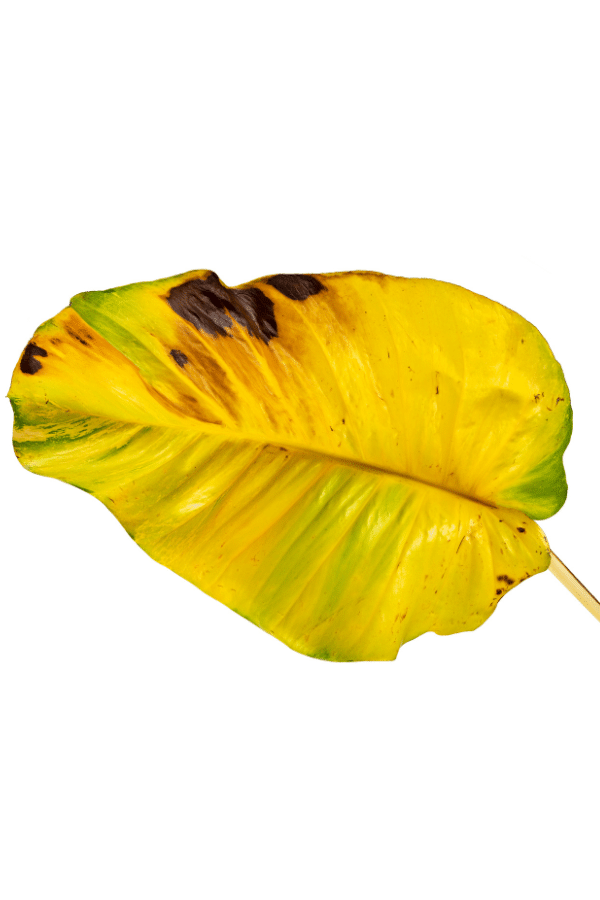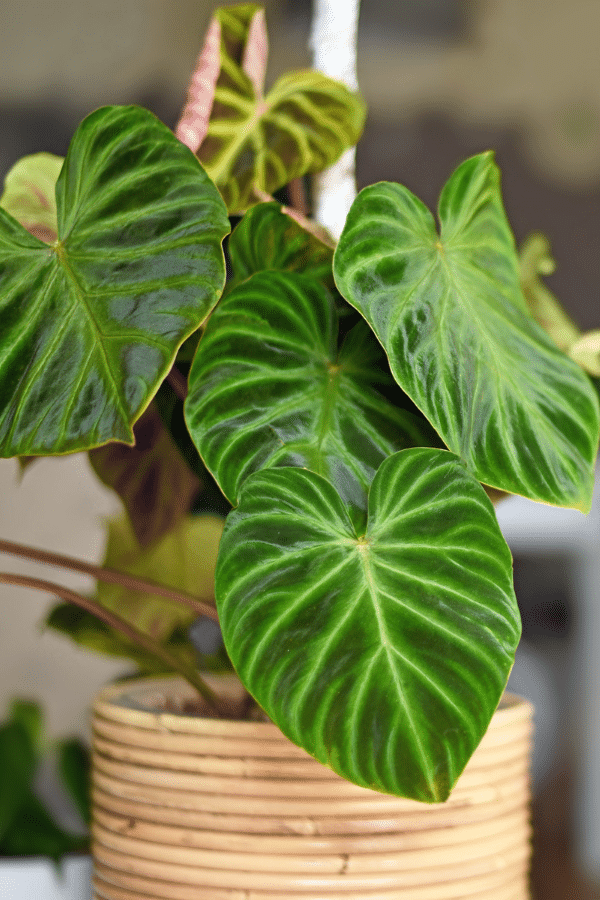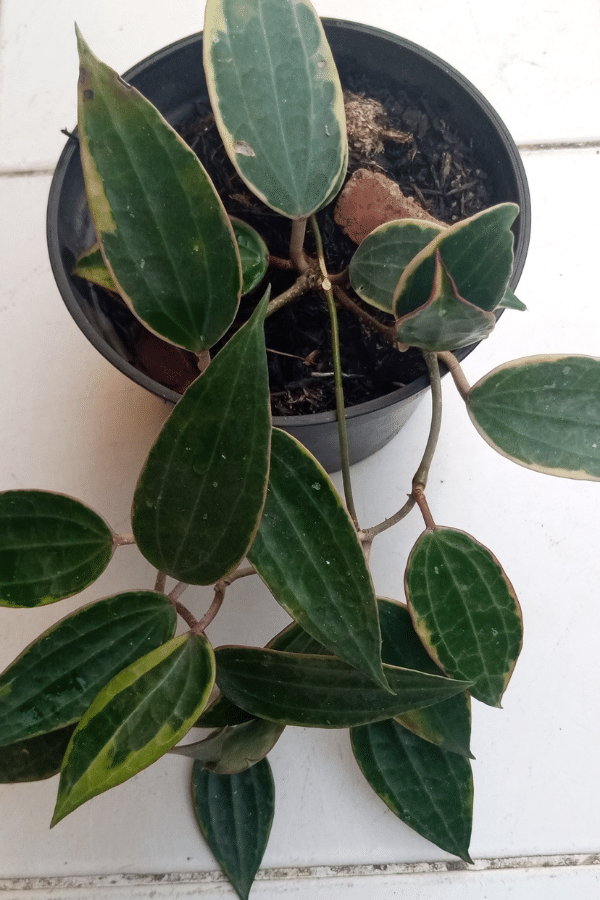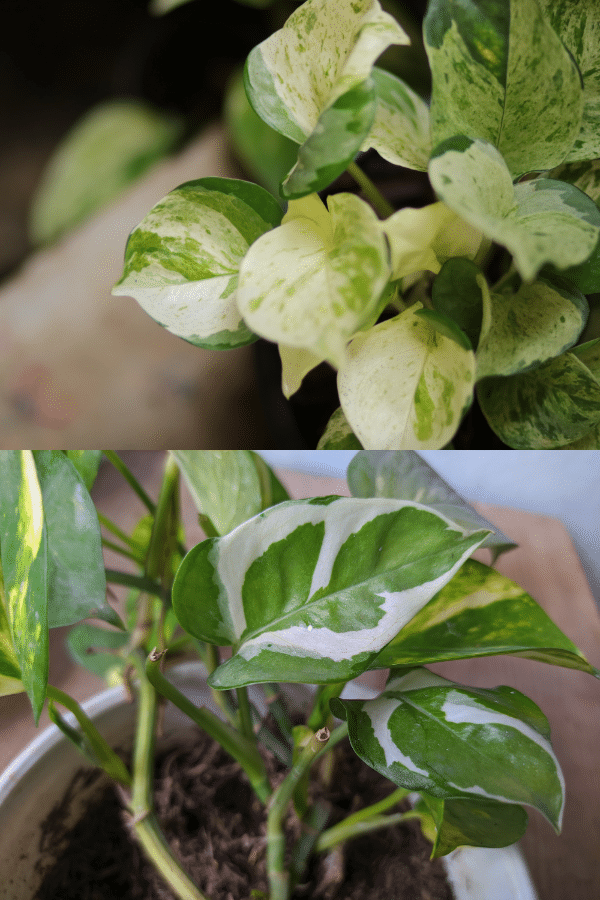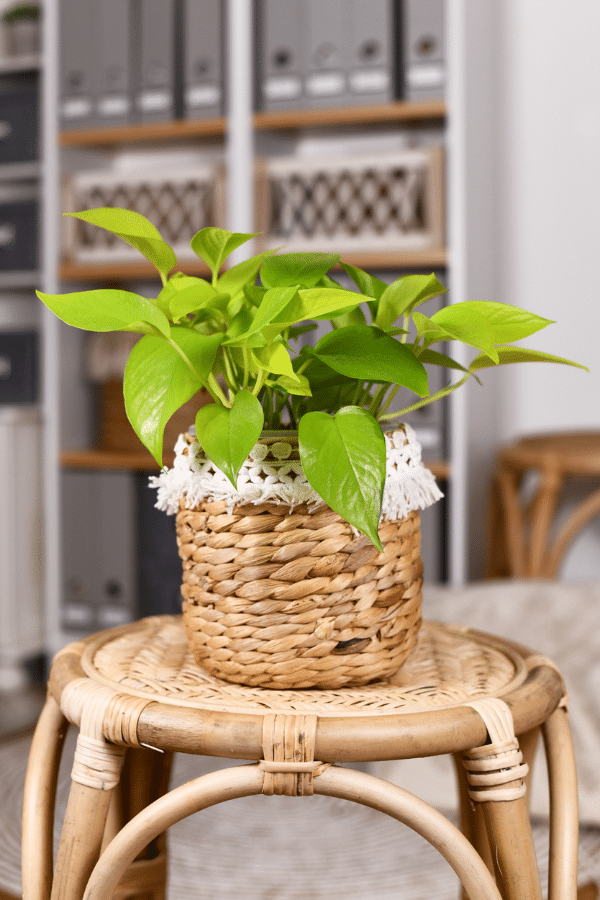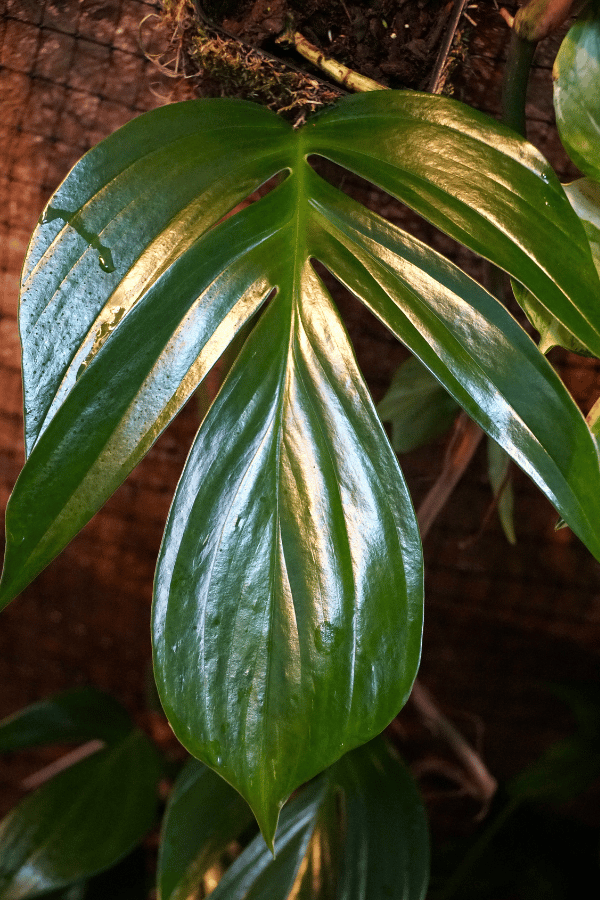Kentia Palm
Scientific Name: Howea Forsteriana
Kentia Palm care is a low-maintenance Palm tree to grow and care for. It doesn’t need much attention to give you beautiful, lush foliage. Consider a Howea Forsteriana Palm tree if you want to add a tropical flair to your houseplant decor.
To give this Palm tree the best care, it requires well-draining soil, allow the soil to stay moist by watering often, provide it medium indirect sunlight, and temperatures ranging from 55-100F, and high humidity levels.
Quick Care Overview
| Common Name | Kentia Palm |
| Scientific Name | Howea Forsteriana |
| Family | Arecaceae |
| Origin | Southern Pacific – Australia, Lord Howe Island |
| Growth Rate | Slow |
| Identification | Dark green fonds with a single trunk |
| Height | Up to 12 feet tall |
| Soil | Well-draining soil |
| Water | Keep consistently moist but not soggy |
| Temperature | 55-100F |
| Sunlight | Medium indirect sunlight |
| Toxic to Cats & Dogs | No |
| Toxic to Humans | No |
| Pests | Mealybugs, spider mites |
| Diseases | Root rot, leaf spot |
Below we will dive deep into this Kentia Palm care guide.
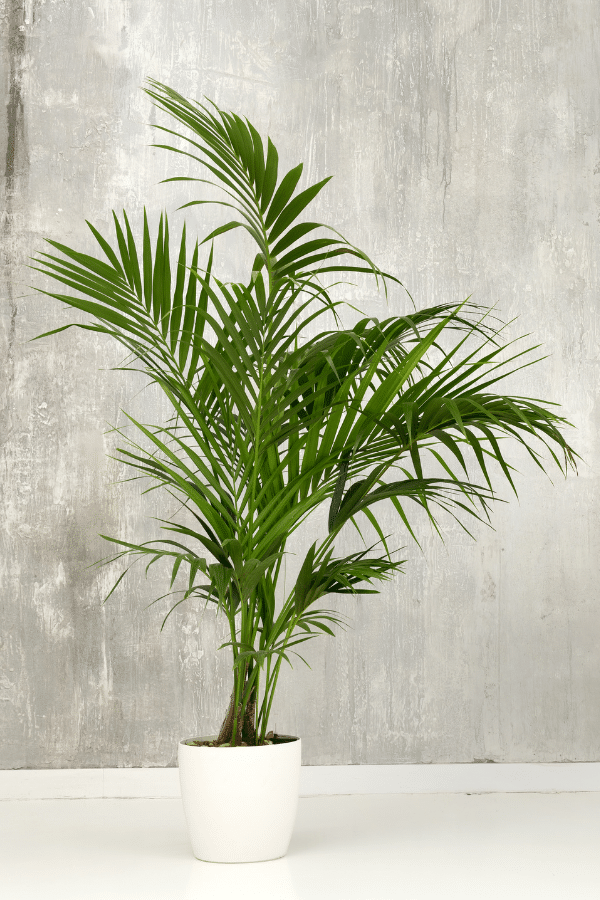
Kentia Palm History
Southern Pacific native Howea Rorsteriana, otherwise known as the Kentia Palm, Paradise Palm, or Thatch Palm, is one of the most popular indoor palm trees found globally. This evergreen tree is shade and cold tolerant and will not grow exceptionally tall as other palms do. Howea Forsteriana has a long history as a parlor palm and was known to be favored by Queen Victoria. These palms may be seen at luxury hotels around the world.
Kentia Palm Identification
This palm presents with dark green fronds and a single trunk. This palm is one of the most commonly found and widely recognized palm trees in the world. When spotting a palm tree in a film, it is likely a Kentia Palm.
Kentia Palm Growth Facts
This palm is often sold with groupings of palms placed together in one container, giving it a multi-trunk appearance.
How Big Does a Kentia Palm Get?
Howea Forsteriana will grow between 3-12 feet tall by 2-4 feet wide when grown indoors.
Kentia Palm Care
Unlike many other houseplants, the Kentia Palm does well when placed in a shadier home spot. Howea Forsteriana requires very little care once established.
Kentia Palm Soil
Howea Forsteriana is not picky and doesn’t mind too much as to which growing medium they are grown in, just as long as it is well-draining. Therefore, a variety of growing mediums would be suitable for this plant. If using a commercial potting mix, try amending the soil with perlite to increase drainage.
Kentia Palm Fertilizer
Kentia Palm plants will benefit from a slow-release granular fertilizer indicated for palms. However, ensure that you follow all label instructions, as too much fertilizer may cause your palm harm. Your palm may also need additional potassium supplementation, as Kentia Palms are prone to potassium deficiency, which may present as necrosis on tips of foliage.
Kentia Palm Watering
Howea Forsteriana prefers to be consistently moist but not oversaturated with water. Depending on growing conditions, you will likely need to water your Kentia palm weekly during the warm growing season. In fall and winter, when the plant is not actively growing, the watering frequency may be reduced. Allow your plant’s soil to dry between waterings. Too much water will lead to yellowing foliage. Alternatively, brown foliage likely indicates your Kentia Palm requires more water.
Kentia Palm Light Requirements
Howea Forsteriana should be kept in indirect sunlight, ideally between 6 to 8 hours a day. While this palm will tolerate low light conditions, foliage will be more prolific if kept in filtered sunlight/partial shade. Howea Forsteriana should not be kept in direct sunlight, as this will likely lead to sun scorching.
Kentia Palm Temperature & Humidity
Being a tropical plant, Howea Forsteriana prefers to be kept in a warm, humid growing environment. Although the Kentia Palm is considered a hardy palm that may tolerate temperatures as low as 25 degrees Fahrenheit, it will be happiest if kept in temperatures above 55 degrees Fahrenheit. Your kentia palm will benefit from added humidity like many other tropical plants. You may aid your plant’s growth by spritzing its foliage periodically or installing a pebble tray or humidifier.
Repotting Kentia Palm
As a slow-growing palm, the Kentia Palm will do fine kept in a 3 gallon container for some time. However, when your palm gets too tall and large for its container, you should repot it into a 5 gallon container with a drainage hole. Water your palm thoroughly the day before repotting. Be careful not to disturb the Palms roots when repotting, as they are very delicate.
Kentia Palm Maintenance & Pruning
You should periodically prune your Kentia Palm to remove any diseased, discolored, or dead fronds, by using sharp, clean shears. Dust the plant’s leaves weekly for the plant to be able to absorb sunlight.
Kentia Palm Propagation
Propagating Kentia Palm may only be done by seed.
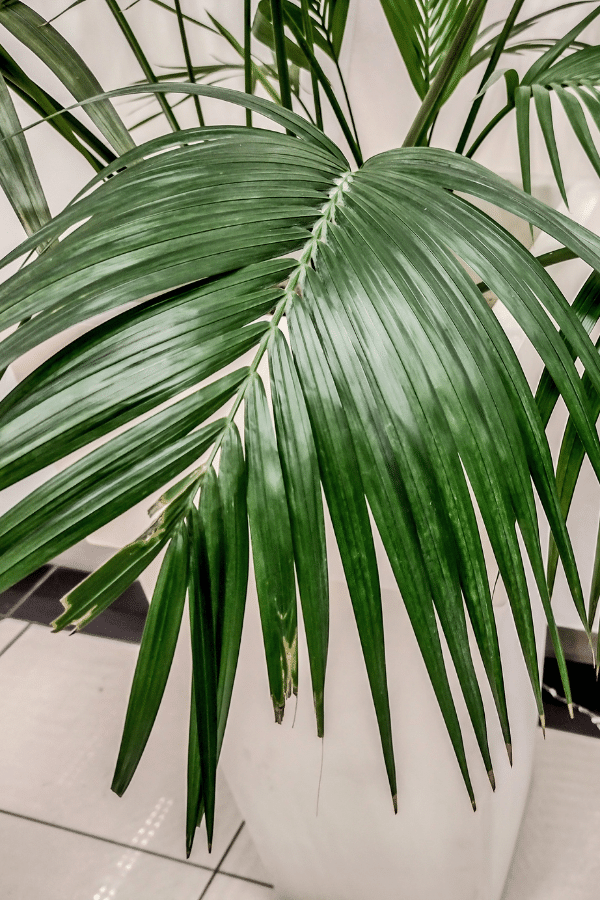
Kentia Palm Toxicity
The Kentia Palm tree is considered non-toxic to humans, cats, and dogs, which is great for individuals with pets who like to dig in the soil.
Toxicity to Humans
Luckily. Kentia Palm is not considered toxic to humans and is safe to keep around small children and babies. However, you still should not ingest this plant.
Toxicity to Cats & Dogs
Kentia Palm is not considered toxic to cats or dogs and is safe to keep around them. However, you should not allow your animal to ingest this plant as it may cause damage to your palm and cause digestive upset to your animal.
Kentia Palm Problems
Kentia Palm Leaves Turning Yellow
The Kentia Palm will often display yellowing foliage when it receives too much water. Therefore, ensure that you do not overwater your palm.
Kentia Palm Leaves Turning Brown
When the foliage of Howea Forsteriana turns brown, it is most often due to a lack of water or humidity. Water the Palm to keep the soil moist and trim away any brown leaves once you notice them.
Kentia Palm Diseases
The Kentia Palm is not known to have many particular issues with diseases. However, they may become susceptible to fungal leaf spot issues and root rot, often related to overwatering.
Kentia Palm Pests
As with many other indoor plants, indoor pests may become a nuisance for the kentia palm. Mealybugs, spider mites, and other common indoor houseplant pests may infest Howea Forsteriana. Isolate your plant and treat it with a pesticide such as neem oil or insecticidal soap upon identifying an infestation. Ensure that you follow all label instructions. It is also important to note that the Kentia Palm is sensitive to alcohol-based pest treatments. These should be avoided, as they may lead to excessive drying of fronds.

